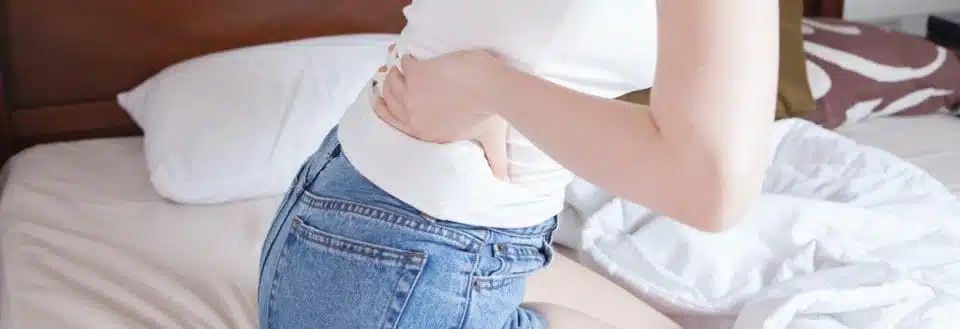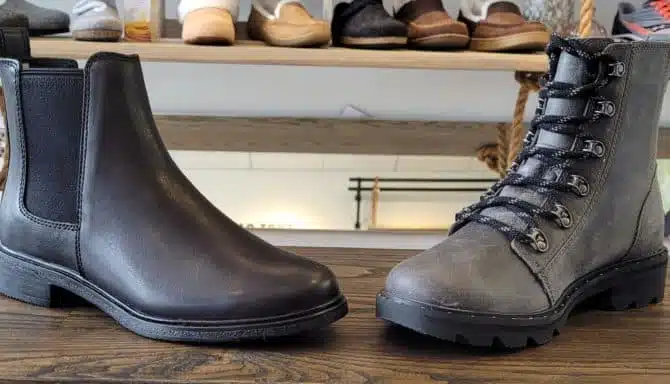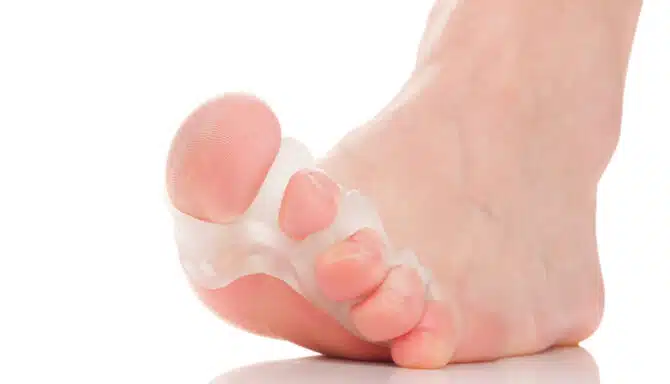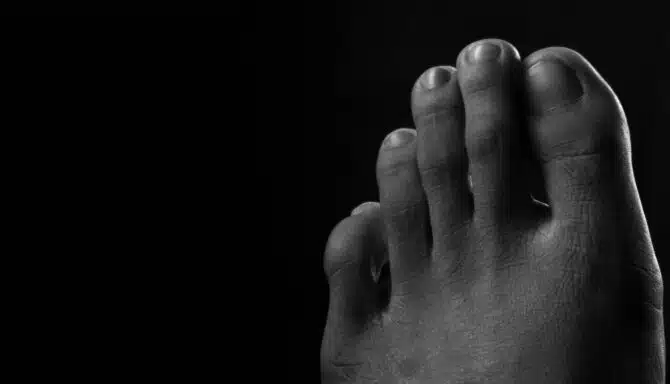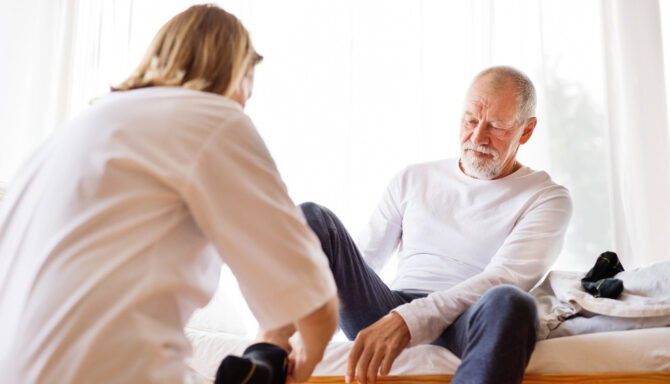They say the human body is a complex system of interconnected parts. From your head to your feet, different parts of your body work together in unison. And although each system in our body performs a different role, they all work together to keep the entire body healthy. This complex whole made of parts is only as strong as its weakest link in some cases. That’s because if one part of your body isn’t functioning properly – take your feet, for example – the effects are likely felt elsewhere – back pain, for instance. This is a domino effect—a cumulative impact produced when one event initiates a succession of similar events.
Because our feet are the support and basis for all human movement, it’s no wonder that they can produce a chain reaction if our foot and ankle biomechanics are off. In this article, we’ll explore how our feet and back are connected.
Back pain is a far-reaching condition that affects much of the population. According to the College of Family Physicians of Canada, between 49% and 90% of people in developed countries will experience at least one episode of low back pain during their lifetime. Further, according to the CFPC, back pain usually resolves within 2 weeks, but symptoms may linger for up to 2 months; 24% to 80% of patients will experience further episodes within a year, and over three quarters will have a reoccurrence at some point in their lives.
Can Feet Cause Lower Back Pain?
Biomechanics and foot abnormalities can influence everything from your gait to muscle balances (or imbalances) throughout your lower body. If there is an imbalance, it means your joints and muscles have to do extra work they weren’t designed to handle. This can ultimately lead to the following conditions:
- Bunions
- Big toe arthritis
- High arches
- Flat feet
- Overpronation
- Supination
Imagine a line drawn from your hips to your feet. Ideally, this straight line should pass through your big toe and second toe. If it does, your weight is born evenly throughout your legs and feet. However, if you have foot abnormalities, this line can pass through the outside of your big toe or even to your third and fourth toes. To compensate, your knees may turn inwards, causing knock-knees. Or in the case of high arches, your knees may turn outward causing uneven balances in your hips. Another example is big toe arthritis. Ultimately, these biomechanics affect how your spine work, which may put pressure on your low back and cause pain.
If your joints hurt, you might change the way you walk. This subtle change in your walking pattern affects how you distribute your body weight. It can then lead to a chain reaction throughout your lower body, into your hips, and ultimately into your back. For instance, if the joints in your toes and feet hurt, the ankles have to compensate. This puts extra stress and pressure on your ankles, so your knees then have to pick up the slack. Then, when the knees get overwhelmed, the load transfers to the next joints up the line: the weight-bearing joints in the pelvic and low back. These joints are connected to the muscles in our low and mid-back; when they’re overworked, those muscles become inflamed and tighten. The result is low back and hip pain.
Step after step, standing for long periods of time, or extended bouts of physical activity can exacerbate the issue simply due to the time spent on your feet. Over time, these imbalances can go from minor issues to major problems that extend throughout your legs and back.
Can My Shoes Cause Back Pain?
Always, always, always invest in proper footwear. This can be said for all foot and foot-related conditions, as well as for overall health. Not only is proper footwear- meaning properly fitted footwear – necessary in general, but you should also wear shoes designed for their specific purpose. For example, wearing supportive workwear when on the job, or wearing running shoes when doing physical activity.
If you need help finding the right footwear, the knowledgeable staff at Feet First Clinic can help you out at our on-site shoe shop. You can also book an appointment with one of our licensed chiropodists to assess your feet and gait and make footwear recommendations to match your foot shape, structure, alignment, and accommodative needs.
Additionally, we offer custom foot orthotic services. Orthotics act to correct or accommodate biomechanical abnormalities, foot deformities (for example bunions, hammertoes, flatfoot, high arches), and a variety of joint and muscle conditions (i.e.: arthritis) to improve your gait and manage pain. They do this by redistributing the force and pressure placed on our muscles and joints when we move. This in turn alleviates strain and pain in our feet and the rest of our body.
In fact, according to a study in the National Library of Medicine, six weeks of prescription shoe orthotics significantly improved back pain and dysfunction compared with no treatment.
What Part of Your Foot Connects To Your Back?
The primary connector between your feet and back is the sciatic nerve.
According to Spine-Health, the sciatic nerve is the largest nerve in the human body and is formed by the union of five nerve roots from the lower spine. It passes deep in the buttock and down the back of the thigh to the heel and sole of the foot. The sciatic nerve serves a vital role in connecting the spinal cord with the skin and muscles of the thigh, leg, and foot.
In fact, the sciatic nerve roots lies underneath those same muscles that connect to the joints in our pelvis and lower back (the ones that cause back pain and buttock pain). So, when those muscles tighten and get inflamed, it can irritate the sciatic nerve.
You may have heard of the term sciatica. This condition refers to any pain that stems from the sciatic nerve. Due to the length of the nerve, whenever pain stems from this area, it can be felt throughout or in part along the sciatic nerve. Specifically, within the foot, you may feel pain in:
- The top and outer side of your foot
- Sole of your foot
- Between your first and second toes
Your Foot Care Solutions Live Here!
All under one roof! Our team handles any and all your foot health concerns. From mild, to critical, we cover all sides of the foot needs spectrum. Call us to ask about actionable steps towards your solution today!
Call us at 416-769-3338 or Click Above to Book Your Assessment Today!
